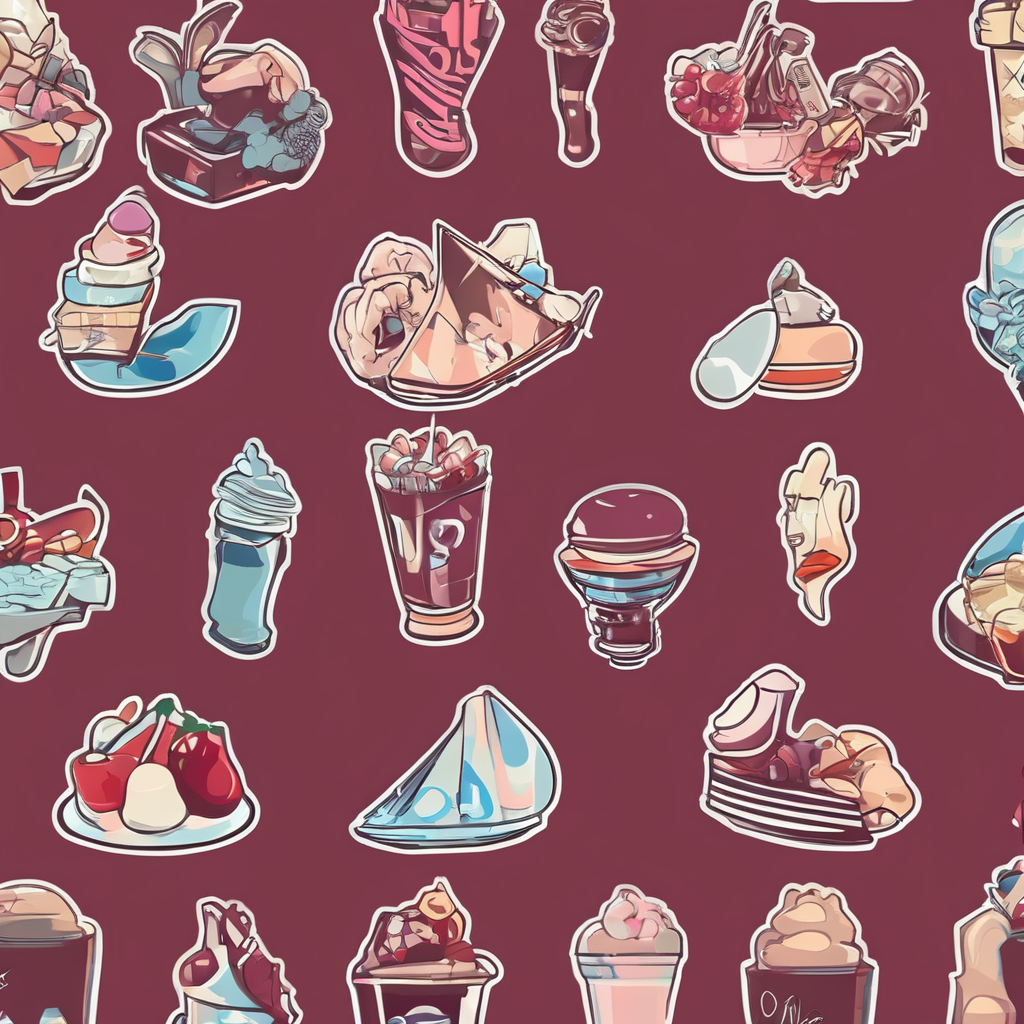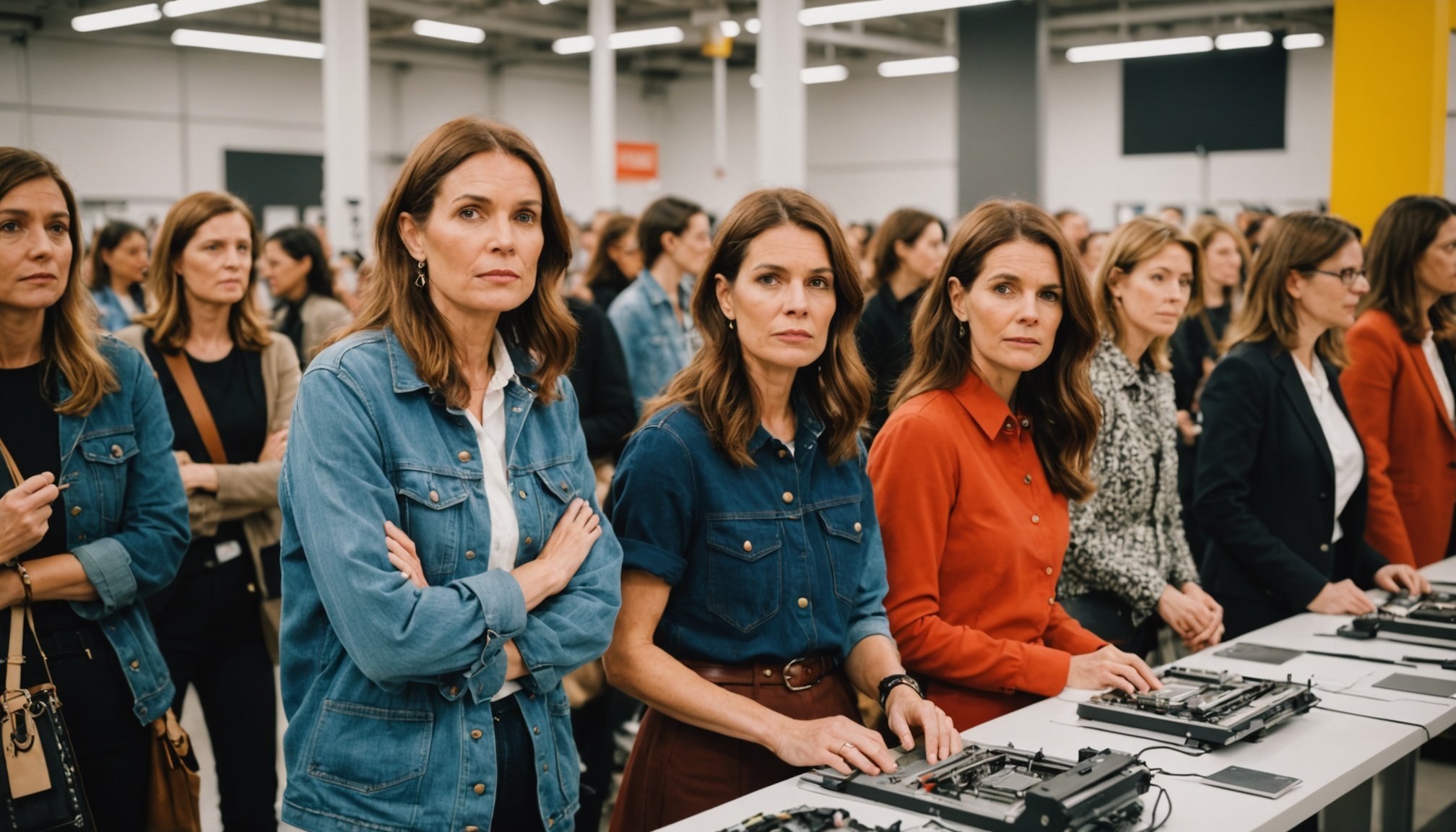Women’s Fashion Revolution: Pioneering the Industry’s Future
The fashion industry has undergone numerous transformations over the years, but none as profound as the current shift towards sustainability and ethical practices. This revolution, driven largely by the changing attitudes and demands of women, is redefining the future of fashion. Here, we delve into the key aspects of this revolution, highlighting the pioneers, the technological innovations, and the sustainable practices that are shaping the industry.
The Pioneers of Women’s Fashion
The 1960s were a pivotal time for women’s fashion, marked by the emergence of designers who challenged traditional norms and paved the way for future generations.
Also to see : Mastering the Art of Fashion: Innovative Styling Tips for Your Fur-Trimmed Leather Jacket in Creative Fields
André Courrèges and Mary Quant
Designers like André Courrèges and Mary Quant were at the forefront of this revolution. Courrèges, known for his futuristic and minimalist designs, introduced the miniskirt to haute couture in his 1964 and 1965 collections. This bold move was not just a fashion statement but a reflection of the changing roles of women in society. Courrèges’ designs were characterized by their simplicity, comfort, and freedom, reflecting his belief in a more modern and liberated woman[2].
Mary Quant, often credited with popularizing the miniskirt, shared a similar vision. Her designs were not intended to shock but to enable women to move freely and participate fully in modern life. Quant’s contribution to fashion extended beyond the miniskirt; she was recognized with an OBE in 1966 for her influence on British fashion[4].
Also to read : Dazzle in a Sequin Skirt: Effortless Elegance for Your Office Holiday Party
Coco Chanel
Coco Chanel, another iconic figure, had already been revolutionizing women’s fashion for decades. Her introduction of the little black dress, the Chanel suit, and the liberation from corsets were significant steps towards a more practical and comfortable wardrobe for women. While Chanel may have criticized the miniskirt as “just awful,” her own designs had laid the groundwork for the freedom and versatility that the miniskirt represented[4].
The Rise of Sustainable Fashion
The modern fashion industry is grappling with its environmental and social impact. The shift towards sustainable fashion is not just a trend but an essential evolution.
Environmental Impact
The fashion industry is one of the most resource-intensive sectors, accounting for 4% of global CO2 emissions, equivalent to the combined emissions of France, Germany, and the UK. The production of garments is projected to increase by 63% by 2030, exacerbating issues like material scarcity, climate change, and waste creation[3].
Technological Innovations
Technology is playing a crucial role in making the fashion industry more sustainable. Innovations such as 3D printing and artificial intelligence (AI) are optimizing production processes, reducing waste, and promoting circular fashion. For instance, 3D printing allows clothes to be built layer by layer, minimizing fabric waste. AI and data analytics help in predicting demand and reducing the number of garments manufactured, thereby lowering environmental impacts[1].
Circular Economy
The concept of a circular economy is gaining traction, with brands like H&M adopting a three-system approach to eliminate waste and pollution, circulate products and materials at their highest value, and regenerate nature. The EU’s proposed Eco-design for sustainable products regulation includes the introduction of digital product passports, which provide transparency about materials’ origins, production processes, and end-of-life instructions. This initiative aims to reduce the negative environmental impact of the apparel industry and help the EU meet its emission reduction targets by 2030[5].
Key Trends in Sustainable Fashion
Several trends are driving the sustainable fashion movement, each addressing different aspects of the industry’s impact.
Eco-Materials and Work Ethics
The use of eco-friendly materials is on the rise. Brands are opting for sustainable fabrics, such as organic cotton, recycled polyester, and plant-based materials. Additionally, there is a growing focus on ethical production practices, including fair labor standards and safe working conditions. The Rana Plaza tragedy in 2013 highlighted the need for better work ethics and transparency in supply chains, prompting many brands to reevaluate their practices[5].
Slow Consumption and Zero Waste
The fast fashion model, which promotes rapid production and disposal of clothing, is being challenged by the slow fashion movement. This approach encourages consumers to buy fewer, higher-quality garments and to care for them in a way that extends their lifespan. Zero-waste design is another trend, where designers create patterns and garments that generate no fabric waste during production[5].
Gender-Based Initiatives
Gender-based initiatives are also part of the sustainable fashion revolution. Brands are focusing on gender equality and women’s empowerment within their supply chains. The Global Fashion Agenda emphasizes the importance of social standards and human rights, particularly for the 80% of garment workers who are women[3].
Practical Insights and Actionable Advice
For consumers, brands, and designers, there are several practical steps to take part in this revolution.
For Consumers:
- Buy Second-Hand: Shopping at thrift stores or online marketplaces for second-hand clothing reduces the demand for new, resource-intensive garments.
- Invest in Quality: Opt for higher-quality, sustainable clothing that will last longer.
- Care for Your Clothes: Learn how to properly care for your garments to extend their lifespan.
- Support Sustainable Brands: Choose brands that prioritize sustainability and transparency.
For Brands:
- Adopt Circular Models: Implement circular economy practices such as recycling programs and product take-back schemes.
- Use Sustainable Materials: Transition to eco-friendly materials and reduce waste in production processes.
- Ensure Transparency: Provide clear information about your supply chain and production practices.
- Innovate with Technology: Leverage technologies like AI, 3D printing, and digital product passports to enhance sustainability.
For Designers:
- Design with Sustainability in Mind: Create designs that are not only aesthetically pleasing but also sustainable and ethical.
- Collaborate with Sustainable Brands: Partner with brands that share your commitment to sustainability.
- Educate Consumers: Use your platform to raise awareness about the importance of sustainable fashion.
The women’s fashion revolution is not just about changing styles; it is about transforming the entire industry to be more sustainable, ethical, and equitable. As consumers become more aware of the environmental and social impacts of their choices, the demand for sustainable clothing will continue to grow. This shift is driven by pioneers like Courrèges, Quant, and Chanel, who challenged traditional norms and paved the way for a more conscious and circular industry.
Quotes from Industry Leaders
- “Sustainable fashion signifies a major revolution in the industry: one that pushes the limits of conventionality and dares to adopt responsibility, ethics, and environmental considerations into fashion.”[1]
- “The fashion industry is one of the largest, most resource-intensive industries. It is a powerful engine for global growth and development, but it needs to change to align with the Sustainable Development Goals.”[3]
- “I didn’t set out to shock. I wanted to be able to move around, go to work, go out in the evening to somewhere where I could dance half the night away.”[4]
Detailed Bullet Point List: Key Strategies for Sustainable Fashion
- Adopt Circular Economy Practices:
- Implement recycling programs
- Introduce product take-back schemes
- Design garments for longevity and recyclability
- Use Sustainable Materials:
- Transition to eco-friendly fabrics like organic cotton and recycled polyester
- Explore plant-based materials
- Reduce waste in production processes
- Ensure Transparency:
- Provide clear information about supply chains and production practices
- Use digital product passports to offer transparency about materials’ origins and end-of-life instructions
- Innovate with Technology:
- Leverage AI and data analytics to optimize production and reduce waste
- Adopt 3D printing and other zero-waste design technologies
- Promote Slow Consumption:
- Encourage consumers to buy fewer, higher-quality garments
- Educate consumers on how to care for their clothes to extend their lifespan
- Focus on Gender-Based Initiatives:
- Ensure fair labor standards and safe working conditions
- Empower women within supply chains
Comprehensive Table: Comparison of Sustainable Fashion Practices
| Practice | Description | Benefits | Examples |
|---|---|---|---|
| Circular Economy | Recycling programs, product take-back schemes | Reduces waste, promotes recyclability | H&M Garment Collecting Initiative |
| Sustainable Materials | Use of eco-friendly fabrics like organic cotton and recycled polyester | Reduces environmental impact, conserves resources | Patagonia’s use of recycled polyester |
| Transparency | Digital product passports, clear supply chain information | Increases consumer trust, promotes accountability | EU’s proposed Eco-design for sustainable products regulation |
| Technological Innovations | AI, data analytics, 3D printing | Optimizes production, reduces waste | Unspun’s 3D weaving technology |
| Slow Consumption | Encouraging fewer, higher-quality purchases | Reduces fast fashion’s environmental impact | Everlane’s focus on quality and longevity |
| Gender-Based Initiatives | Fair labor standards, women’s empowerment | Improves social standards, reduces gender-based inequalities | Global Fashion Agenda’s emphasis on social standards |
As the fashion industry continues to evolve, it is clear that sustainability, ethics, and transparency will be at the forefront of this revolution. By embracing these changes, we can create a future where fashion is not only stylish but also responsible and equitable for all.







